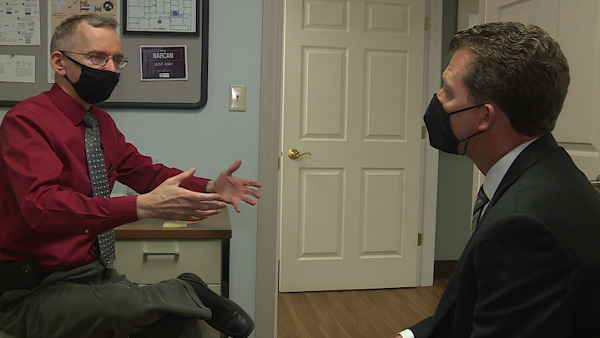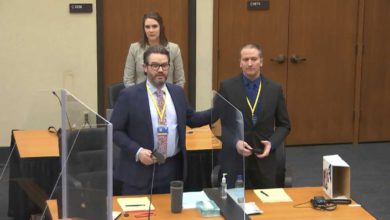

On the sidewalk surrounding the Adams County courthouse in West Union, Jason Fultz said he's okay with not being vaccinated against COVID-19."I've never really worried about it and then you know, I've been around people a lot and I've always had a good immune system and everything," Fultz said.Data published by The Health Collaborative shows the way Fultz feels is echoed throughout Adams County.Of the eight counties in southwest Ohio, Adams County is currently last in the race to vaccinate eligible residents, with 22 percent having had a first dose while 16 percent are fully vaccinated."Demand has certainly slowed," Adams County Health Commissioner Dr. William Hablitzel said.Hablitzel said a few weeks ago, vaccines were in high demand. That's no longer the case."I think there is more hesitancy in rural counties," he said.Warren County, northwest of Adams County, is leading southwest Ohio's vaccination race. While parts of Warren County are also rural, 43 percent of residents there have gotten a first dose and 33 percent are fully vaccinated."Knowing that people have responded really well in Warren County has been great," Warren County Health Commissioner Duane Stansbury said. "We want to keep that momentum going as best we can."Stansbury said one reason the vaccination rate is high in his county is that it's home to a lot of health professionals.Back in Adams County, Hablitzel hopes vaccine momentum shifts in a way that will prompt more people to get a dose of COVID-19 protection."We'll keep plugging along. We have it available. People can walk in and we'll accommodate them," Hablitzel said.But Hablitzel doesn't think his county's vaccine rate will jump significantly anytime soon. For him, that's a sobering reality since he said more people in Adams County now know someone who's either had COVID-19 and managed to survive or someone who's lost the fight. He believes a number of factors are suppressing vaccination rates in Adams County, including: concerns about the J&J vaccine pause, transportation issues and, in some cases, politics.
On the sidewalk surrounding the Adams County courthouse in West Union, Jason Fultz said he's okay with not being vaccinated against COVID-19.
"I've never really worried about it and then you know, I've been around people a lot and I've always had a good immune system and everything," Fultz said.
Data published by The Health Collaborative shows the way Fultz feels is echoed throughout Adams County.
Of the eight counties in southwest Ohio, Adams County is currently last in the race to vaccinate eligible residents, with 22 percent having had a first dose while 16 percent are fully vaccinated.
"Demand has certainly slowed," Adams County Health Commissioner Dr. William Hablitzel said.
Hablitzel said a few weeks ago, vaccines were in high demand. That's no longer the case.
"I think there is more hesitancy in rural counties," he said.
Warren County, northwest of Adams County, is leading southwest Ohio's vaccination race. While parts of Warren County are also rural, 43 percent of residents there have gotten a first dose and 33 percent are fully vaccinated.
"Knowing that people have responded really well in Warren County has been great," Warren County Health Commissioner Duane Stansbury said. "We want to keep that momentum going as best we can."
Stansbury said one reason the vaccination rate is high in his county is that it's home to a lot of health professionals.
Back in Adams County, Hablitzel hopes vaccine momentum shifts in a way that will prompt more people to get a dose of COVID-19 protection.
"We'll keep plugging along. We have it available. People can walk in and we'll accommodate them," Hablitzel said.
But Hablitzel doesn't think his county's vaccine rate will jump significantly anytime soon. For him, that's a sobering reality since he said more people in Adams County now know someone who's either had COVID-19 and managed to survive or someone who's lost the fight. He believes a number of factors are suppressing vaccination rates in Adams County, including: concerns about the J&J vaccine pause, transportation issues and, in some cases, politics.
Source link








